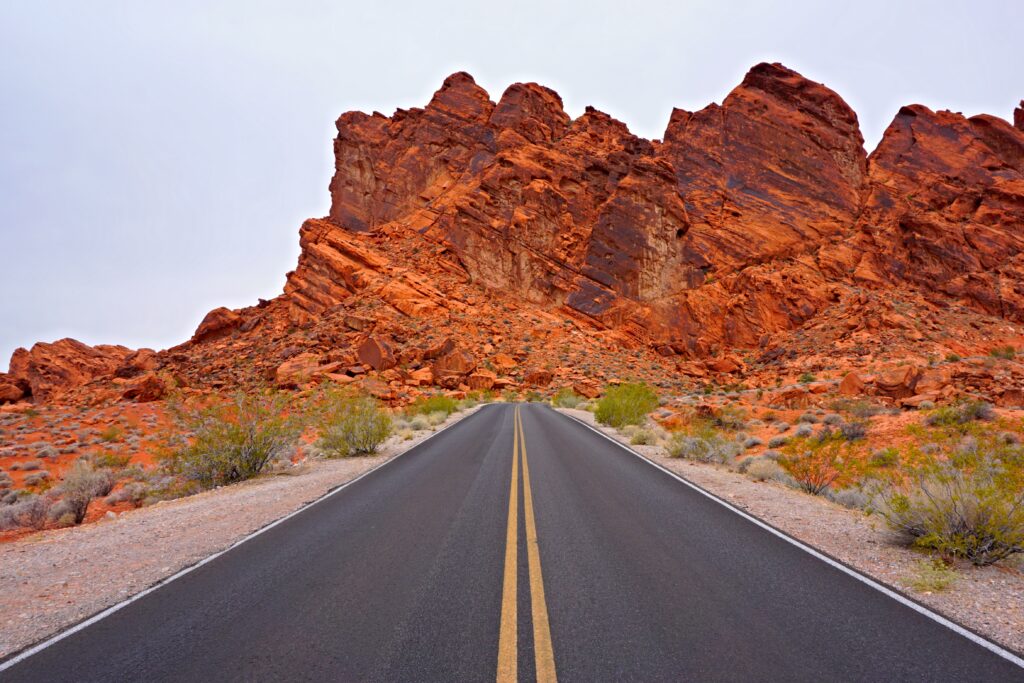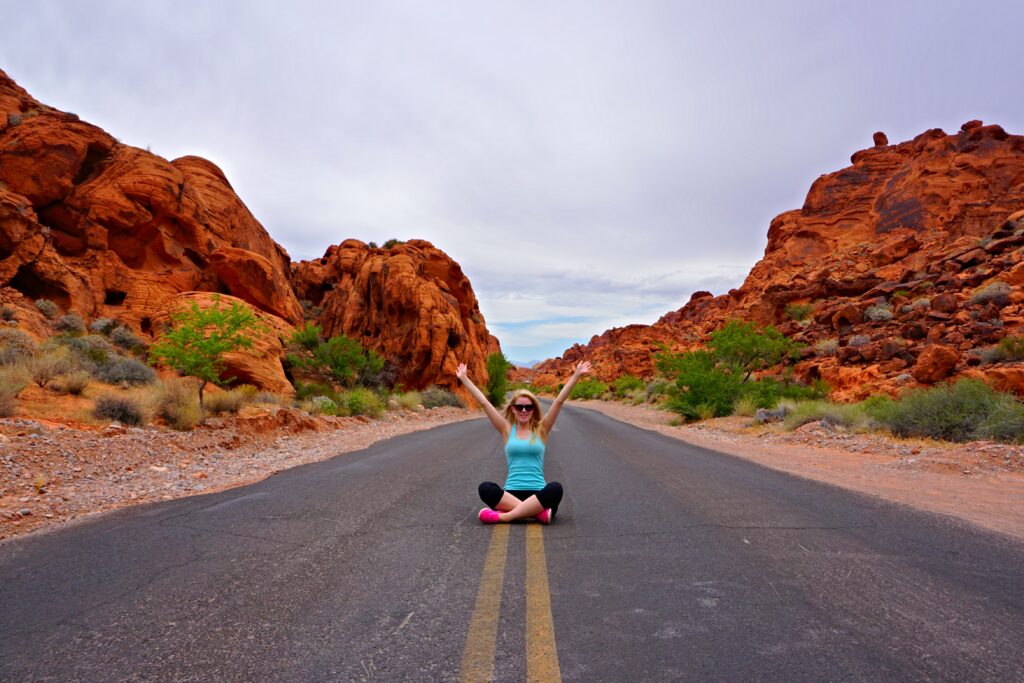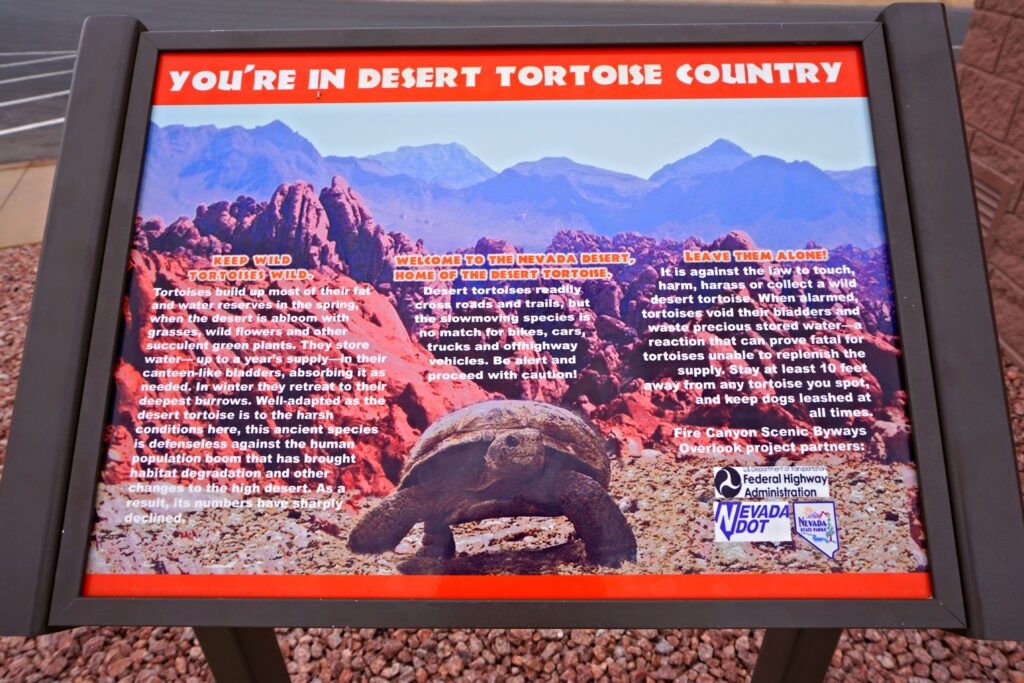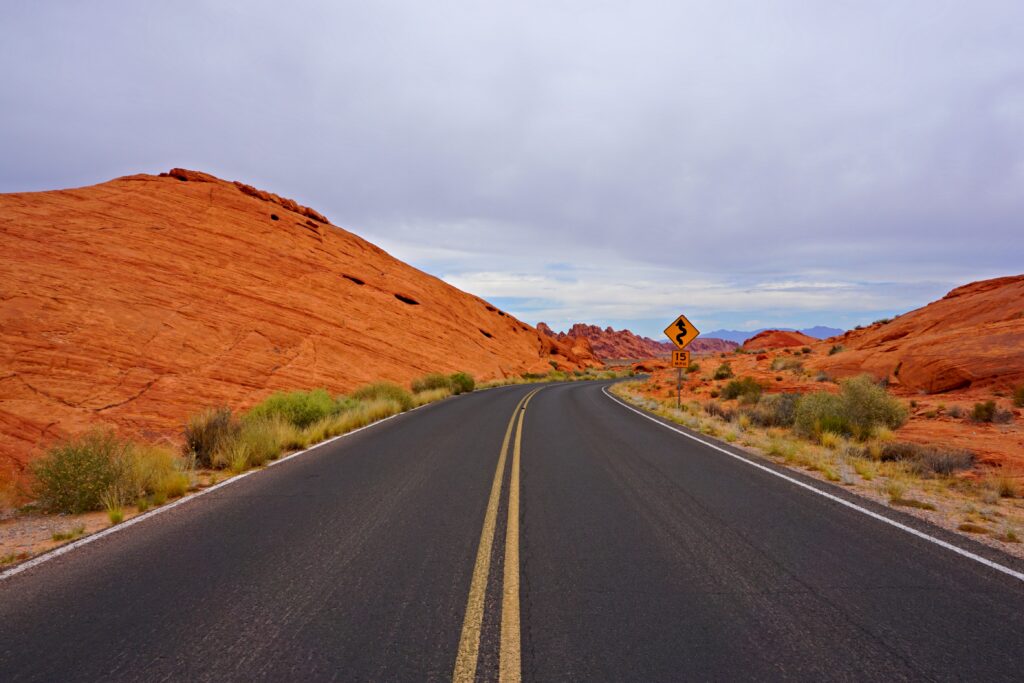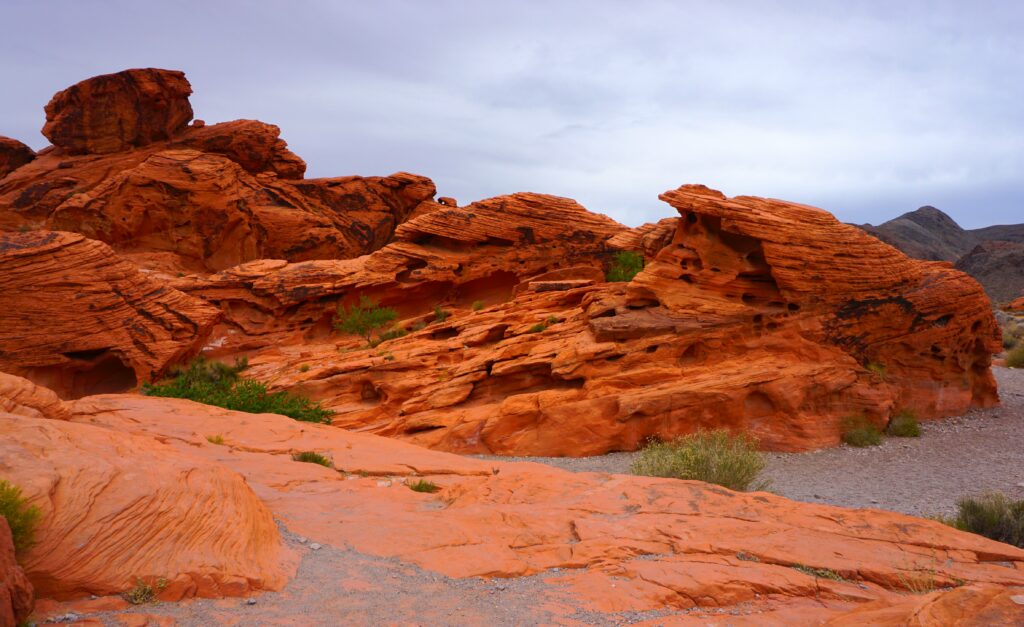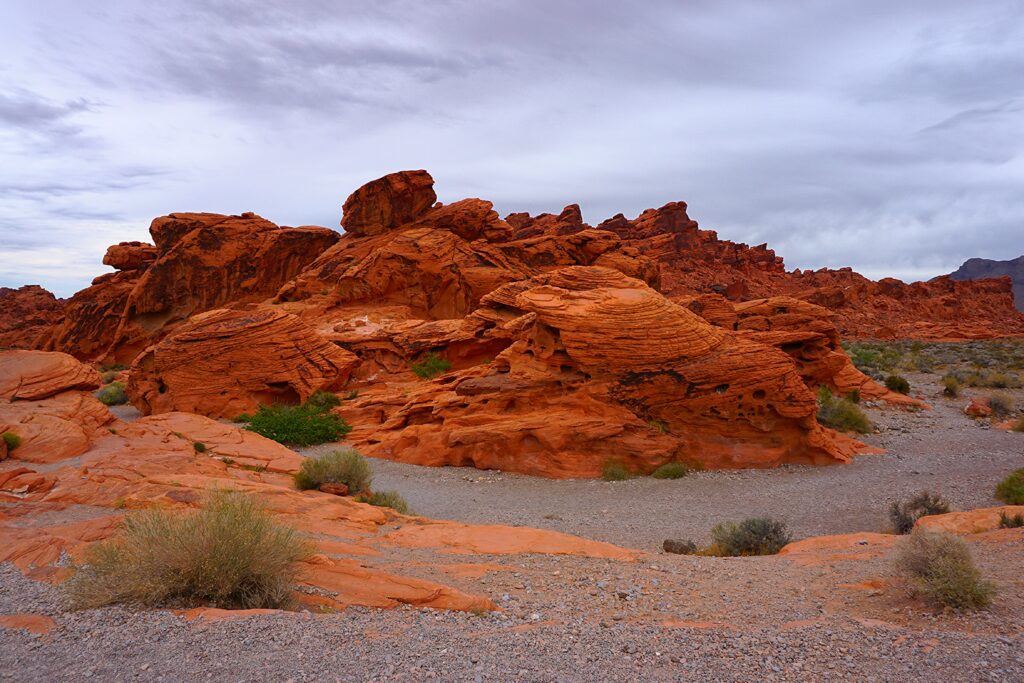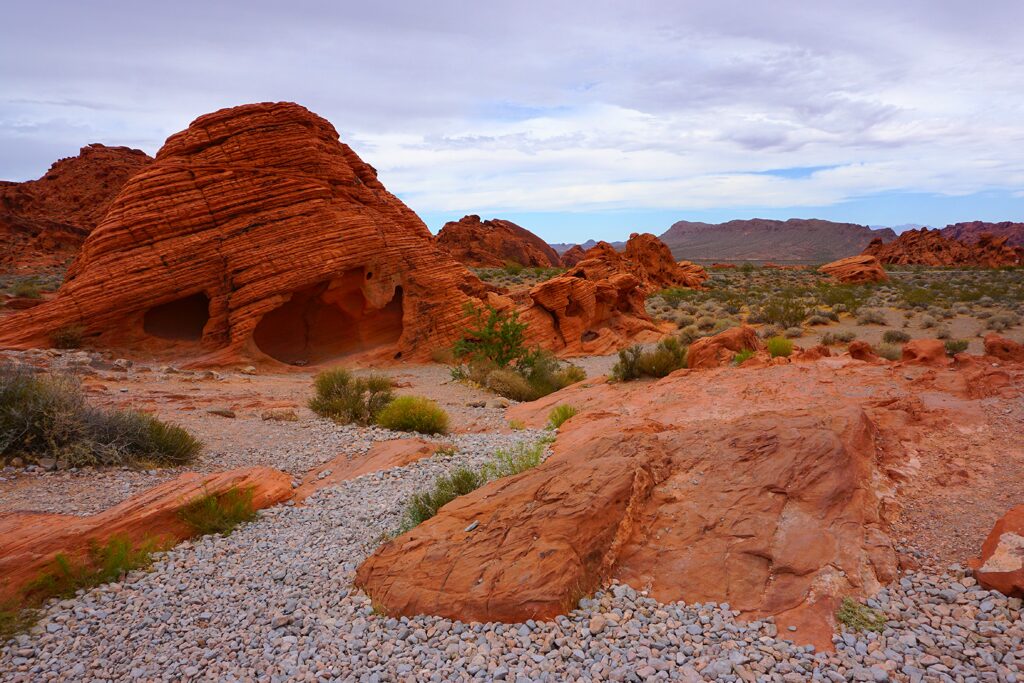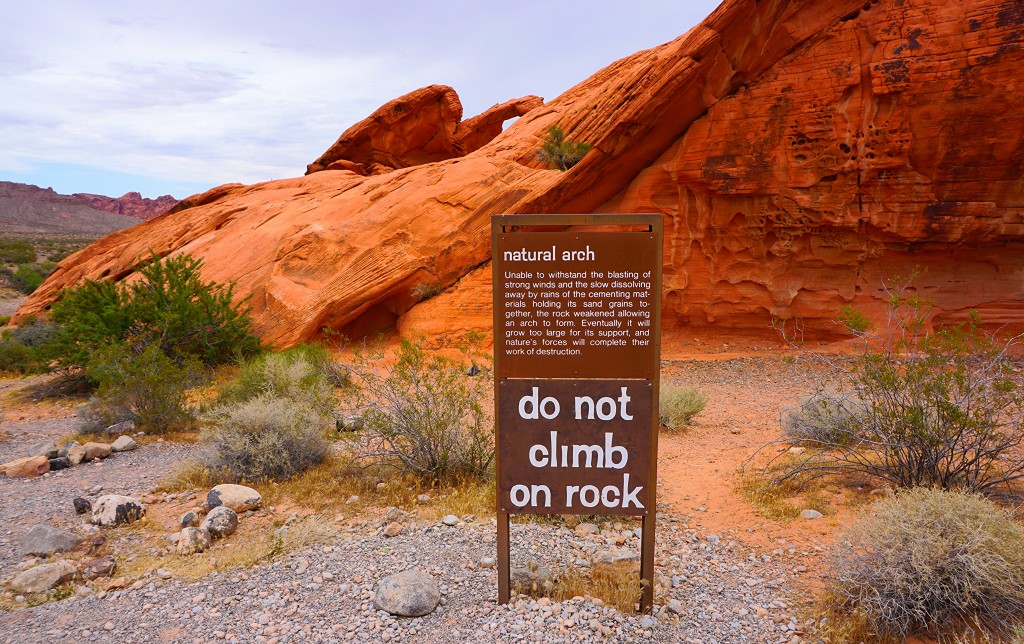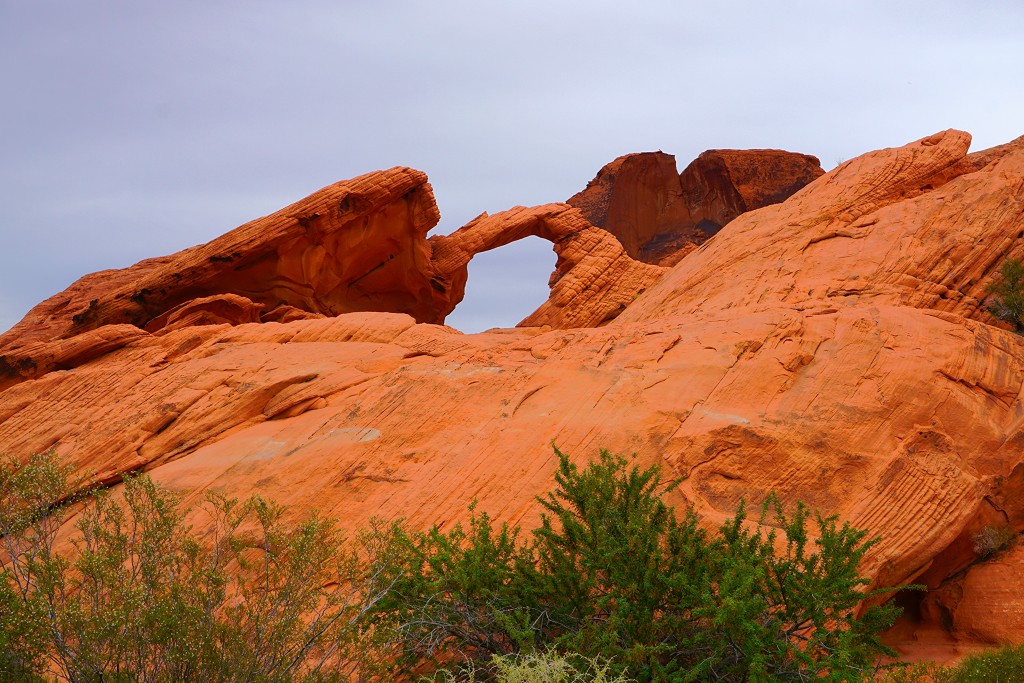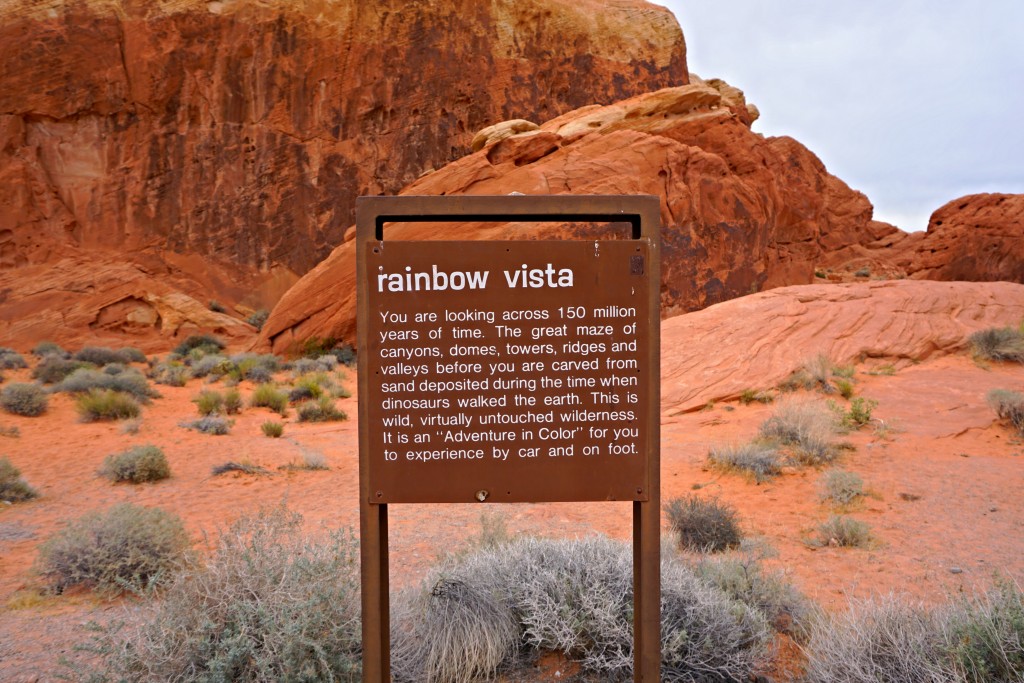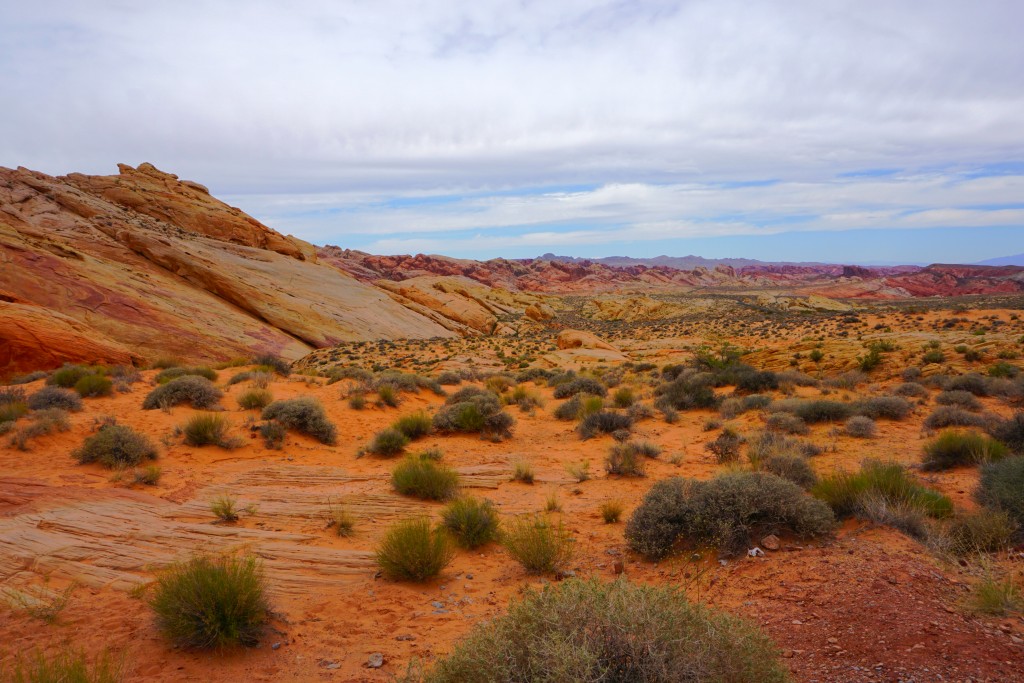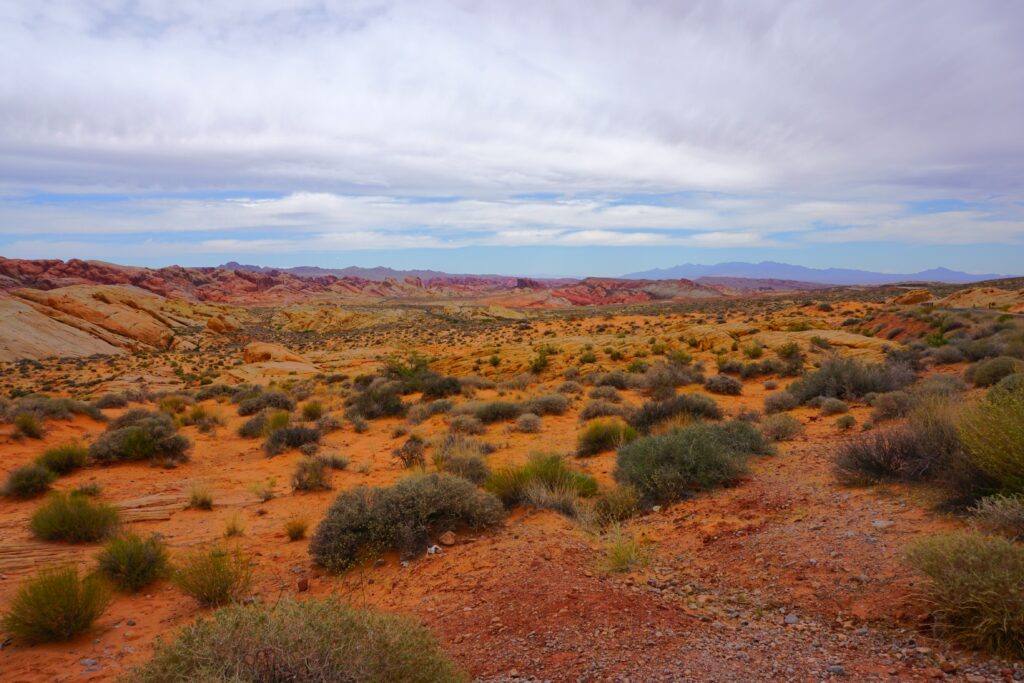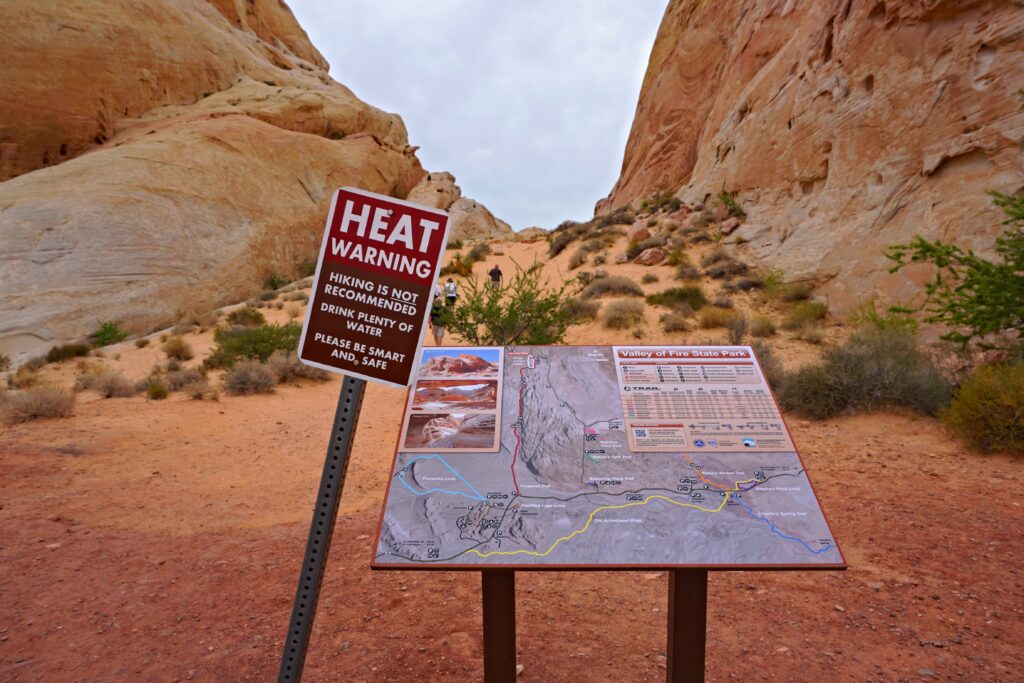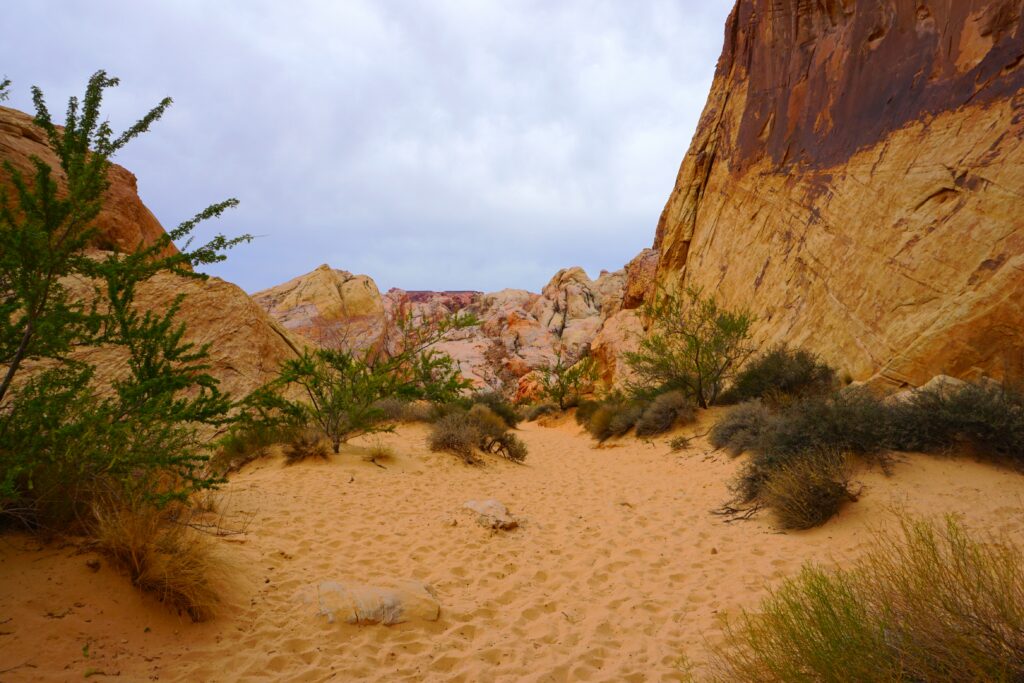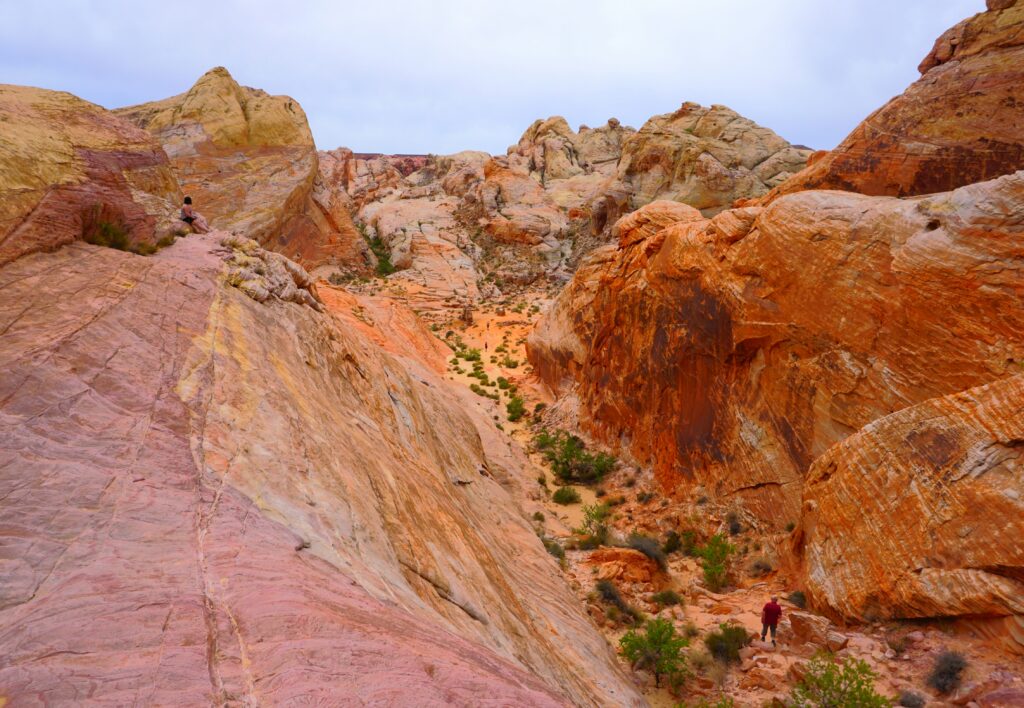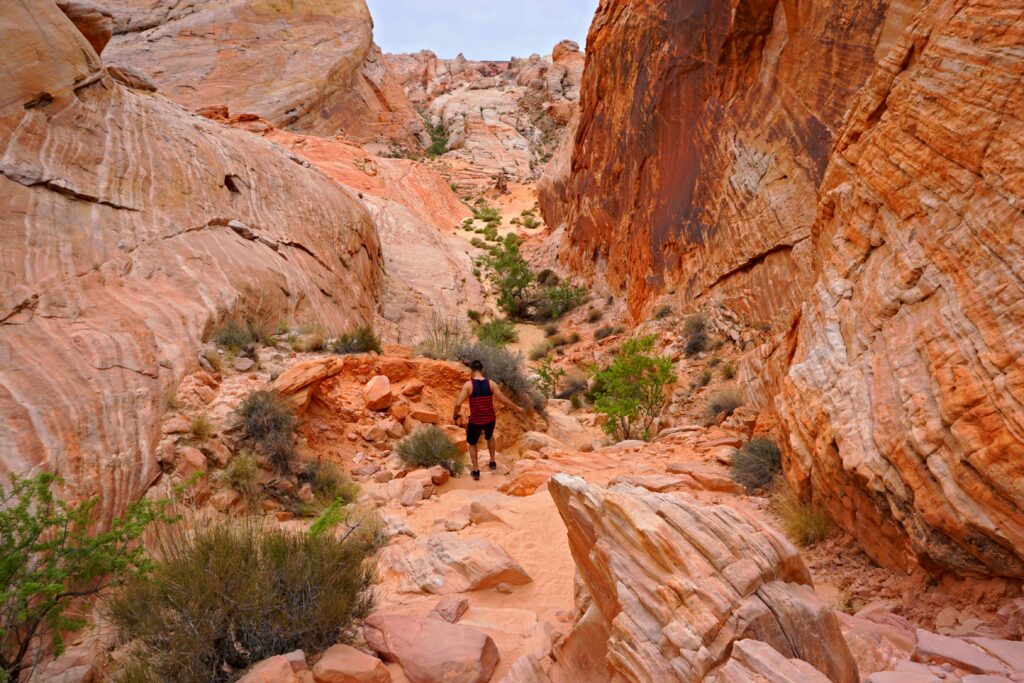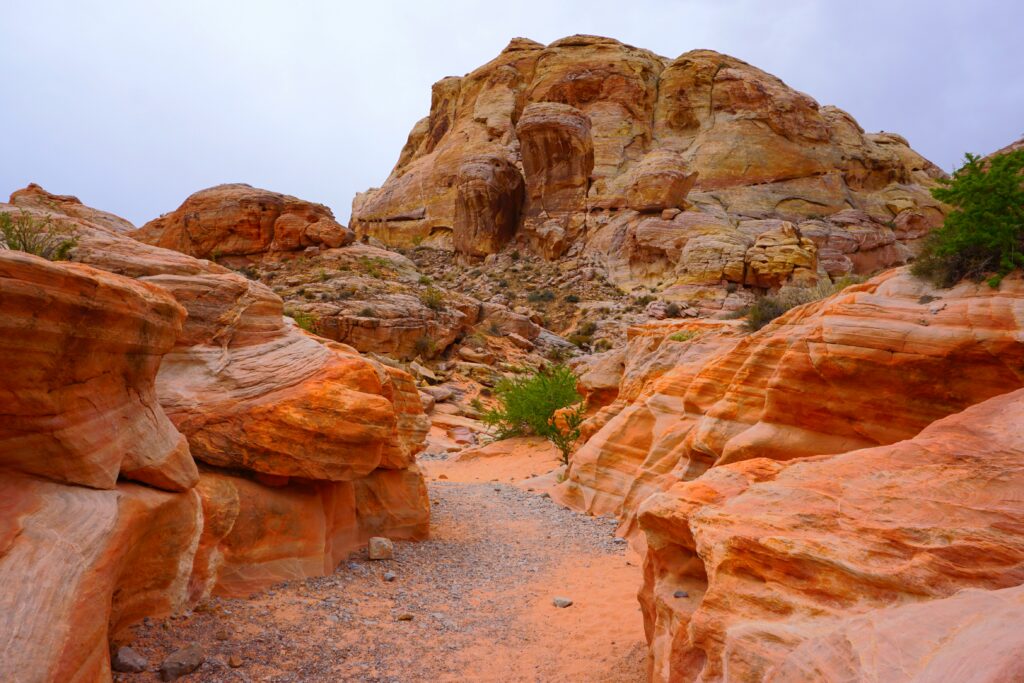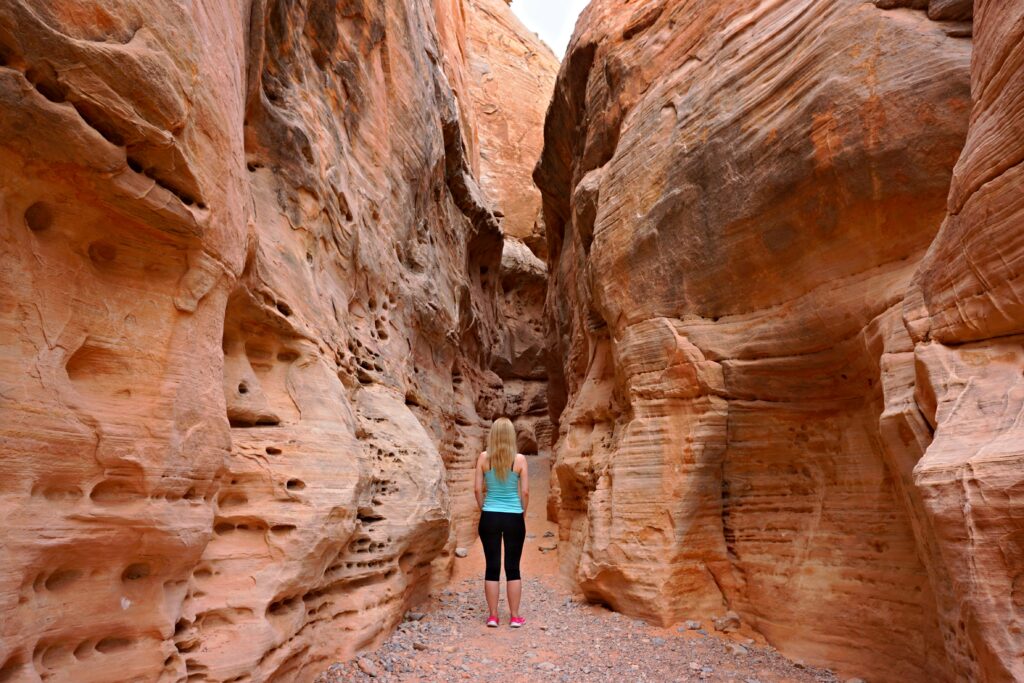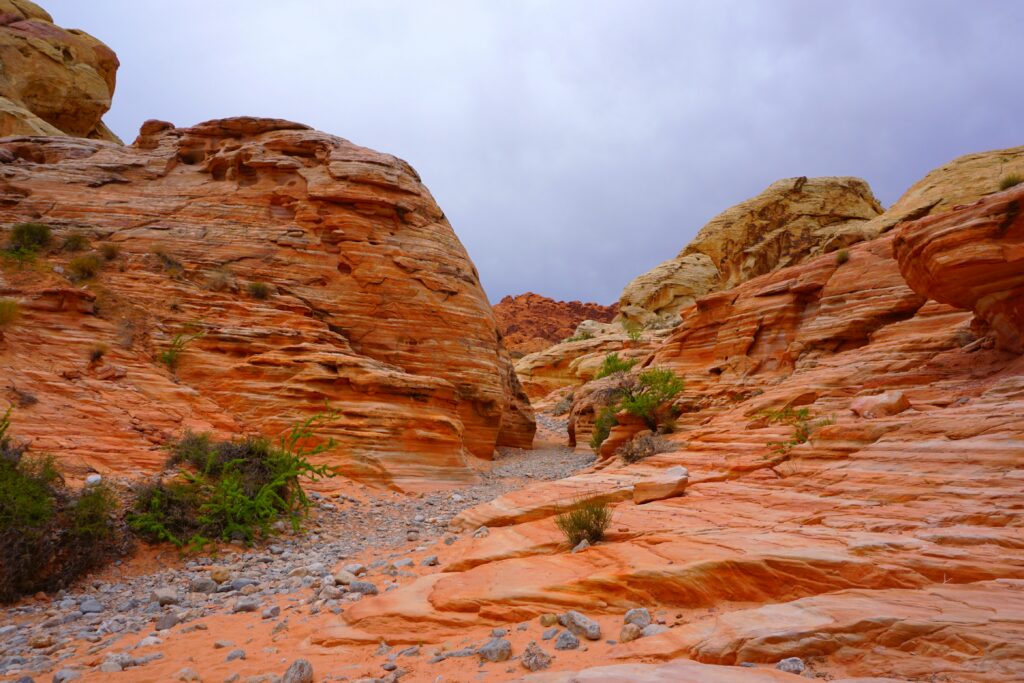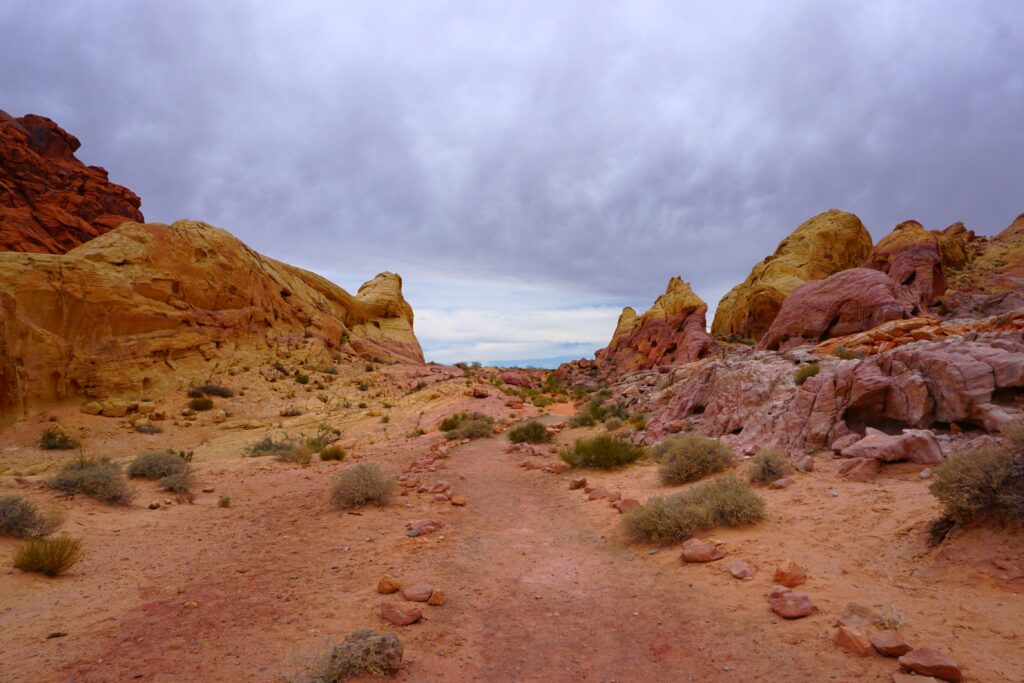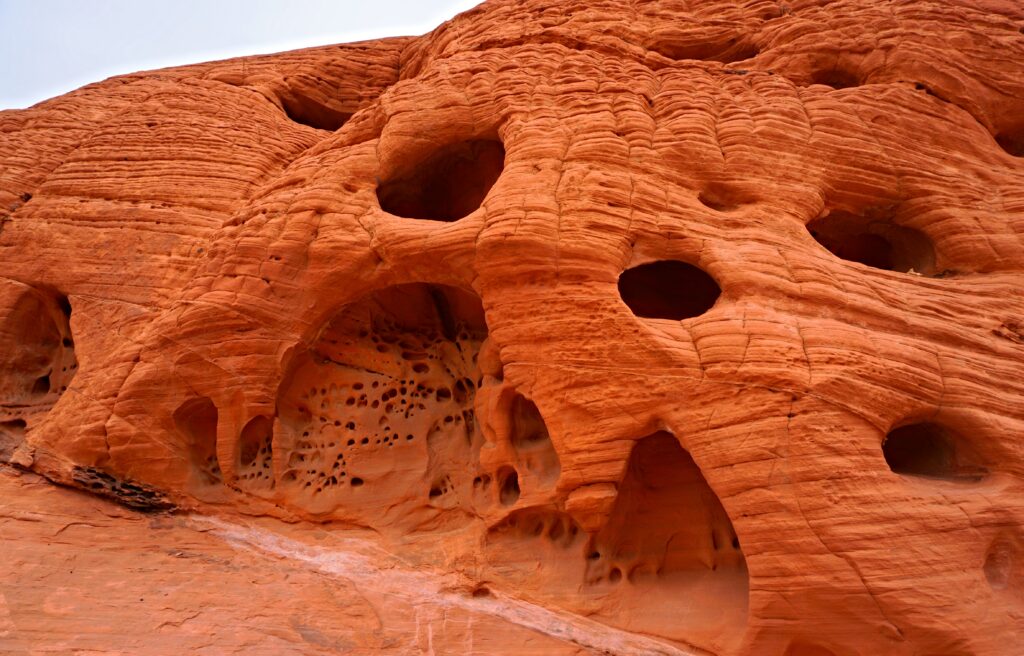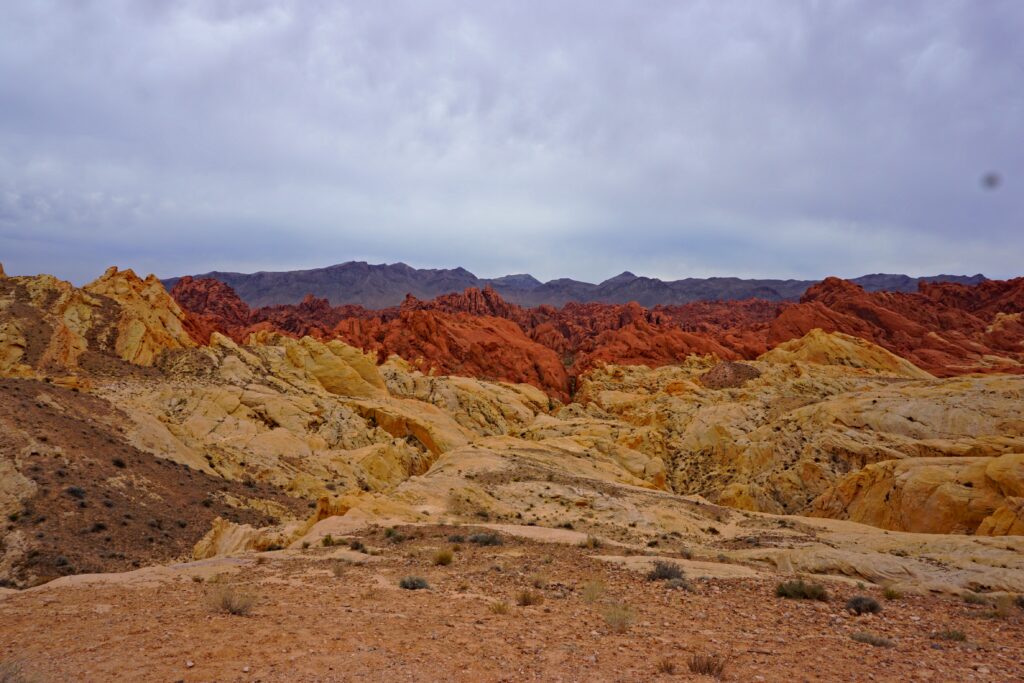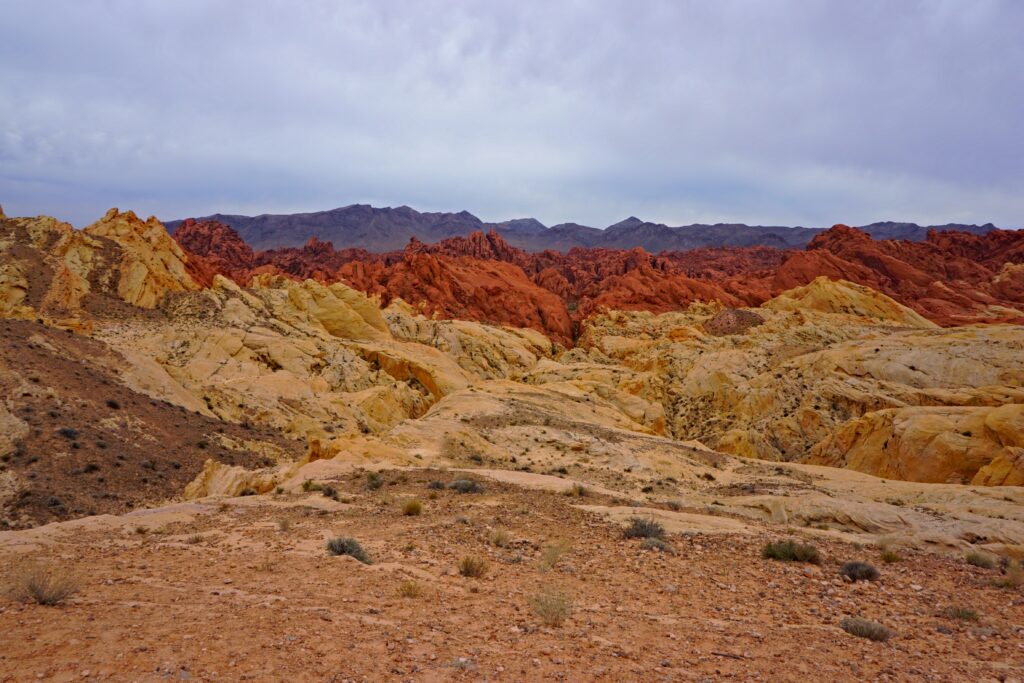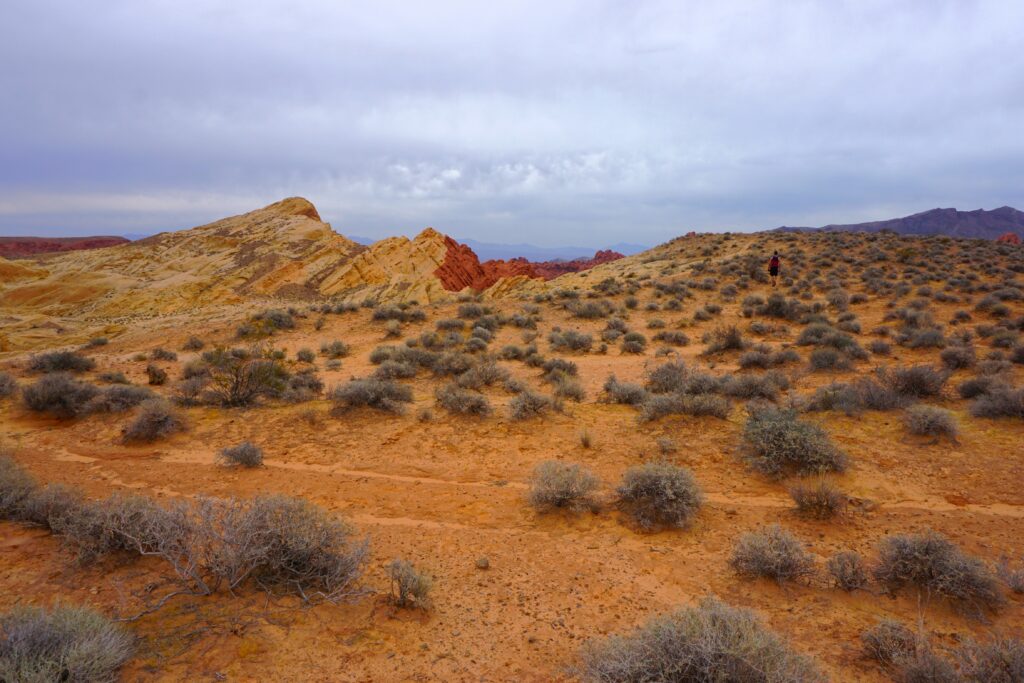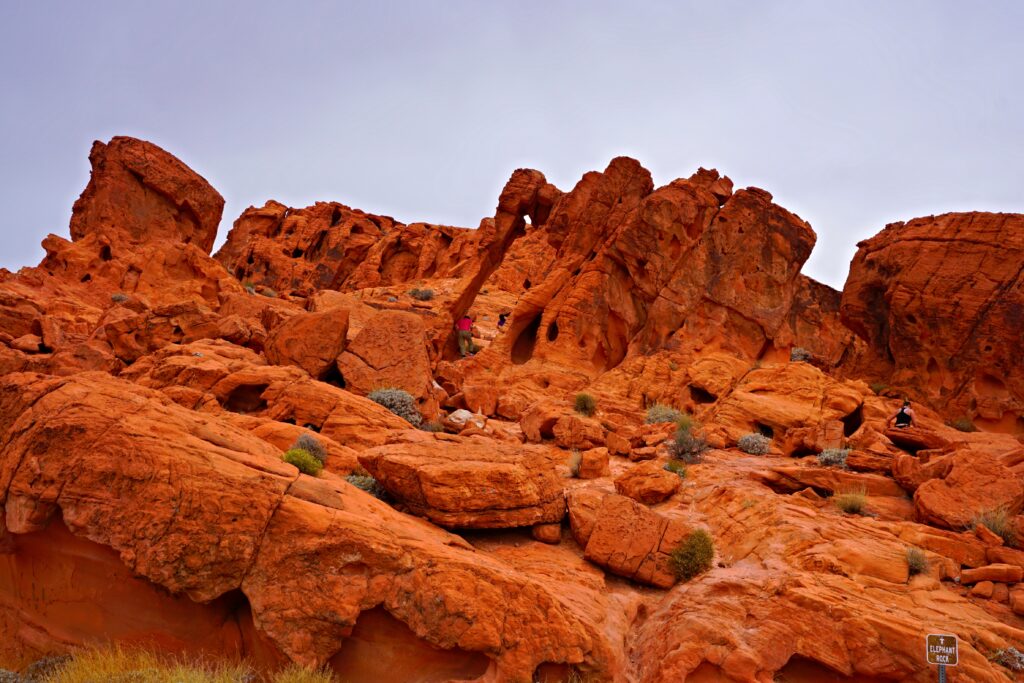Whenever I travel to Las Vegas, I always try to make time to explore nearby hiking trails and parks.
Located in the Mojave Desert, Valley of Fire is considered Nevada’s oldest state park. The park covers an area of almost 36,000 acres and its formations are a result of fossilized sandstone and sand dunes that formed more than 150 million years ago.
Its elevation varies between 2,000 and 2,6000 feet. Visiting Valley of Fire was one of the highlights of my trip to Las Vegas!
If you’re looking to take a break from the bright lights of the Las Vegas Strip, Valley of Fire State Park makes the perfect half-day excursion. I recommend this hiking tour of Valley of Fire.
A local tour guide will take you on your choice of an easy, moderate, or difficult hike in the park. It also includes hotel pick-up and drop-off for your convenience. You can click here to learn more.
Related Posts:
- Visiting Las Vegas for the first time: Rookie mistakes to avoid
- Vegas on a budget – 30 ways to save money
- 20 free things to do in Las Vegas for all ages
Table of Contents
What do I need to know about traveling to Valley of Fire from Las Vegas?
Best time to go: October to April when the weather is comfortable for hiking and exploring the valley. If you’re traveling during the hot summer months, plan your hikes for early in the morning or later in the day.
Top things to do at Valley of Fire: The Beehives, Arch Rock, Elephant Rock, Seven Sisters, Mouse’s Tank, White Domes Trail, Silica Dome, Rainbow Vista, Pink Canyon, and Fire Wave.
What’s Valley of Fire known for? Valley of Fire is famous for its beautiful red standstone rock formations which light up the valley, especially at sunset. This makes it look like it’s on fire.
Location & Hours: 29450 Valley of Fire Road, Overton, Nevada. Open year round from dawn to dusk.
Park facilities: Visitor center (gift shop), camping, RV camping, picnicking, group areas (accommodating up to 45 people) and hiking.
Fees: The day use entrance fee is $10 per vehicle with Nevada plates (or $15 for non-Nevada veichles). Camping is $20 per vehicle, per night (of $25 for non-Nevada vehicles). If you bike in, it’s $2.00 per bike.
How to get to Valley of Fire from Las Vegas
Valley of Fire is about 55 miles northeast from Las Vegas and takes just over an hour to drive there.
Directions from the Las Vegas Strip: Take the I-15 North approximately 35-40 miles. Take Exit 75 and head East toward Valley of Fire/Lake Mead. Drive approximately 17 miles on Valley of Fire to the West Entrance Station.
Best Valley of Fire Tours
If you don’t have a car, there are several tour companies available that will pick you up from Las Vegas and take you on a tour of Valley of Fire.
Valley of Fire Guided Hiking Tour from Las Vegas – Choose an easy, moderate, or difficult hike depending on your level of fitness and experience. Pickup is available from most strip and downtown properties but you may be asked to meet at a different hotel than your own.
Las Vegas: Valley of Fire State Park Tour – Start with pickup from your hotel within the city and journey northeast to Valley of Fire State Park. Your guide will show the best places for stunning scenic photos. Stop at several viewpoints and photograph picturesque arches, buttes, and canyons.
From Las Vegas: Valley of Fire, California Mojave Desert Tour – Trek between the towering sandstone formations, which glow fiery red in the sunlight and are responsible for the park’s name.
Below are some more top rated tours to check out:
- Valley of Fire Tour from Las Vegas – Hotel pickup and drop off. Also includes a boxed lunch and bottled water.
- Las Vegas: Valley of Fire and Red Rock Canyon Day Trip
- From Las Vegas: Valley of Fire Tour – Includes lunch, water, and all entrance fees.
- Las Vegas: Valley of Fire and Seven Magic Mountains
Winters tend to be mild here with temperatures ranging from freezing to 75 degrees Fahrenheit. Daily summer highs however usually exceed 100 degrees and it’s not uncommon to reach 120 degrees.
While spring and fall are the preferred seasons for visiting the park, we went on an overcast morning in June which worked out great for us.
Other nearby hikes you may be interested in:
- Hiking the Narrows in Zion National Park
- Hiking up Angel’s Landing in Zion National Park
- One-week itinerary exploring Utah’s National Parks
The area is home to a variety of different wildlife, including many species of lizards and snakes, coyote, spotted skunk, kit fox and black tailed jackrabbit. The park is also home to the desert tortoise which is a rare species and protected by state law.
While most of the wildlife in the area are nocturnal creatures, I still recommend taking precautions since the park is home to rattle snakes which are poisonous.
Fortunately I didn’t run into any snakes, but I managed to see a black tailed jackrabbit and several lizards!
The park was not busy when we went on a weekday morning which made it great for taking photos.
There are many things to see and do at Valley of Fire so plan to spend at least 3-4 hours here. I suggest grabbing a map at the visitor center (if you didn’t receive one at the entrance) to get an idea of what you want to explore during your visit.
We drove from sight to sight, stopping along the way at different vista points throughout the park. These were some of my favourite sights:
The Beehives
These sandstone formations are an excellent representation of geologic cross bedding. Each layer of bed represents the different layers of silt that were deposited at different times.
Arch Rock
Over time, the rock has weakened which allows for the natural arch that you see today. Eventually it will grow too large to support itself and collapse.
Rainbow Vista
This is one of the most popular spots for photos in the park. I recommend getting here early as several tour buses were already lined up when we arrived.
White Domes
This was the only hike we had time for during our visit. It’s a moderate loop that takes around 30-45 minutes to complete.
One of the great aspects about this hike is the diversity of the scenery. You’ll be treated to sweeping desert vistas, beautifully colored rocks, canyons, caves and the remains of the set for the 1966 movie, The Professionals.
Fire Canyon / Silica Dome
One of the most beautiful spots in the park, the change from white to red at the base of the dome is a result of small quantities of iron in the rock producing a rust-like stain.
Elephant Rock
If you look closely, you’ll see an arch in the shape of an elephant.
I took this photo from the road, but it’s best to stop in the parking lot nearby and a hike a short distance to reach the formation.
What to pack for a Valley of Fire day trip
- Hiking boots or shoes – For those who plan to hike the trails, you’ll want to wear a comfortable pair of hiking shoes.
- Water bottle – No matter what time of year you visit, make sure to bring plenty of water with you. Remember, you’re in the desert so it’s essential that you stay hydrated.
- Small daypack – Use this to hold your water bottle, sunscreen, hat, sunglasses, snacks, and other hiking essentials.
- Sunscreen – I like this mineral one for my sensitive skin.
- Hat and sunglasses
- Snacks for when you get hungry
Where to stay in Las Vegas
If you’re visiting Valley of Fire from Las Vegas, I recommend staying in the middle of The Strip. This will provide a great base for exploring Las Vegas. Below are some of my personal favorites hotels:
- Bally’s Las Vegas (Most Popular)
- Paris Las Vegas (Most Popular)
- Bellagio Las Vegas (Most Popular)
- Aria Resort & Casino Las Vegas
- Planet Hollywood Las Vegas
- Park MGM Las Vegas
- Flamingo Las Vegas
- Harrah’s Las Vegas
- The LINQ Las Vegas
I always find the best rates when booking my hotel through Vegas.com or Booking.com.
For more tips, check out these Las Vegas travel guides:
- 10 best kid-friendly hotels in Las Vegas
- Visiting Las Vegas for the first time? 16 essential travel tips
- 20 free things to do in Las Vegas
- Las Vegas on a budget – The ultimate guide
- Las Vegas Explorer Pass – Is it worth it?



